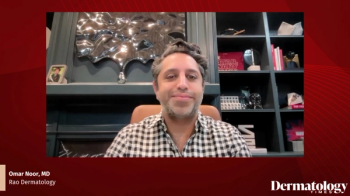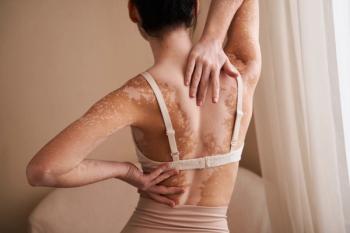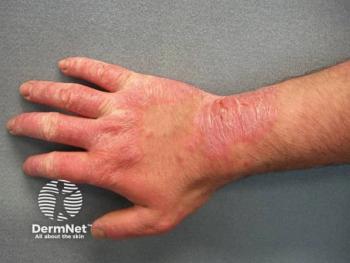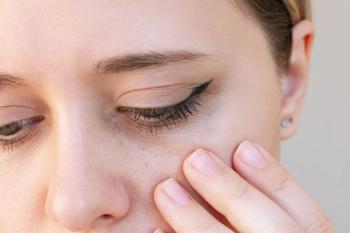
- Dermatology Times, May 2025 (Vol. 46. No. 05)
- Volume 46
- Issue 05
#DermTok: Navigating TikTok’s Acne Advice Misinformation
Key Takeaways
- Social media, especially TikTok, is a major source of dermatological advice, but much content lacks clinical accuracy, raising misinformation concerns.
- Studies show only a small percentage of TikTok acne videos are from medically trained professionals, with low-quality information prevalent.
Social media reshapes dermatology, but misinformation about acne treatments on platforms like TikTok raises concerns among clinicians and patients alike.
As TikTok and other social media platforms continue to influence
how patients seek dermatologic advice—particularly around acne—clinicians are confronting online misinformation. While the hashtag #DermTok garners billions of views, studies show the majority of popular videos lack clinical accuracy, prompting calls for more evidence-based content from board-certified professionals like Chris Tomassian, MD, and Adam Friedman, MD, FAAD.
With the overwhelming number of acne treatments, patients often turn to social media to seek health care information from others’ experiences. Because of this, the spread of misinformation is a concern in the clinical space. Even with its potential ban in the US, TikTok has become a source of education for patients, especially in dermatology. Around the world, TikTok has over 1.04 billion active users each month,1 and 44.7% of these users are among Gen Z.2
Chris Tomassian, MD, a board-certified dermatologist and founder of The Dermatology Collective in Glendora, California, noticed this pattern and is now one of the most prominent dermatologists on social media, with almost 2 million followers on TikTok alone.
“The whole shift of medicine is changing, and the narrative is changing,” Tomassian said. “The patients are different, and I think social media has such a big role in it. I think more people are going to social media than sometimes to Google to look something up.”
Content in this skin care space, often referred to as #DermTok, can come from dermatologists, aestheticians, and “dermfluencers” who provide advice and explore trends on various skin conditions, with acne being the most common. The hashtag #acne has over 3 million posts and 129 billion views on TikTok.3
Videos of procedures, product reviews, and skin care hacks are shared daily. Some of the most common clips on the app involve dramatic transformations, in which users share timely photos and videos of their skin and present their entire skin care routine, sometimes claiming that a certain product completely cleared their acne lesions.
However, a common concern for clinicians is the validity and accuracy of what is being promoted on the platform, especially regarding paid partnerships. In a recent Dermatology Times poll, more than 43% of respondents said they were not fans of #DermTok. Furthermore, only 11% of the TikTok videos posted under #acne, one of the app’s top hashtags, were posted by medically trained clinicians, and about 14% of the videos explicitly endorsed a product.3
One study tested the quality of information shared on TikTok and found that the dermatological content shared by creators is of low quality overall.4 More than 35 accounts and 17,085 of the app’s informational dermatology videos were analyzed using the DISCERN criteria to evaluate reliability and clarity. This included the platform’s top 10 dermatological profiles and their corresponding top videos.
“Access to online or social media–based medical information, regardless of how unreliable, is faster and more efficient than getting into the board-certified dermatologist’s office. The volume of content highlights an unmet need that calls upon us to use creative approaches to address this,” said Adam Friedman, MD, FAAD, chair of dermatology at the George Washington University School of Medicine & Health Sciences in Washington, DC.
Researchers at George Washington recently evaluated the quality of TikTok videos related to spironolactone, one of the most common hormone-based therapies for acne.5 According to Friedman, the senior author of the study, the top videos under the hashtag #spironolactone were generally unreliable.
“Sadly, this finding was not surprising,” Friedman said. “We are not the first nor certainly the last to underscore the low quality of highly viewed content through social media, which is certainly concerning when dealing with the health of our patients.”
The study found that the top 50 spironolactone videos had more than 100 million views. Despite these impactful view counts and TikTok’s popularity, the top videos had poor reliability and quality overall. The cumulative scores for all 50 videos were 1 out of 5 on the modified DISCERN scale and 2 out of 5 on the Global Quality Scale. No videos reached the maximum score of 5.
“We need guardrails on medical information disseminated via social media,” Friedman noted. “This study is one example of how we can demand evidence-based content by exposing limitations, especially of highly utilized and viewed posts.”
With this evidence, physicians should be aware of #DermTok’s expanding role in patient care and encourage patients to seek medically proven advice rather than turning to their phones. The lack of quality in this content can impact patient decision-making and expose users to misinformation related to therapy efficacy, self-initiation and discontinuation, and adverse effects.
“There is clearly potential for good with disseminating accurate, evidence-based information via social media, but it would be ideal to have specialty standards and expectations,” Friedman said. “As licensed and board-certified practitioners, we should be held accountable if biased or harmful information is shared regardless of motivation.”
Initiatives like the American Academy of Dermatology’s “Your Dermatologist Knows” help distinguish clinicians from dermfluencers and guide patients toward evidence-based, research-backed treatments. Even so, there is a need for more dermatologist-created, educational content on TikTok and other social media platforms.
“As we see it play out, it’s going to be the future. I really think everybody should be on social media in some form,” Tomassian said. “It doesn’t have to be video...but I think you really need to be authentic to who you are as a person and don’t get caught up in the trends.”
Dermatologists who engage on the app should promote unbiased and ethical content to halt the spread of misinformation. If they choose to post their own videos, they must do so in a standardized, patient-centered way that aligns with the algorithm for maximum reach but maintains professionalism, especially with transparency about financial interests and partnerships. Even so, a general education video is not a substitute for a doctor’s consultation, and experts should stress this to their patients—both on and offline.
“I can only imagine the time and investment needed to create some of these Hollywood-quality posts, and with only so many hours in the day, one has to wonder how that impacts patient access, which is unfortunately well known to be limited in dermatology, and therefore clinical experience,” Friedman said.
References
- Gantenbein L, Navarini AA, Maul LV, Brandt O, Mueller SM. Internet and social media use in dermatology patients: search behavior and impact on patient-physician relationship. Dermatol Ther. 2020;33(6):e14098. doi:10.1111/dth.14098
- Lebow S. Gen Z leads the pack on Snapchat, TikTok. eMarketer. December 14, 2023. Accessed May 1, 2025.
https://www.emarketer.com/content/gen-z-leads-pack-on-snapchat-tiktok . - Iyengar L, Saldanha S, Chong AH. #Acne: a thematic qualitative analysis of acne content on TikTok. Australas J Dermatol. Published online February 26, 2025. doi:10.1111/ajd.14433
- Nigro AR, Osman A, Saal RC, Smith RJ. Information regarding dermatology as seen on the social media platform TikTok. JMIR Dermatol. 2025;8:e59597. 2025;8:e59597. doi:10.2196/59597
- Vidal SI, Baek P, Menta N, Murphy E, Friedman A. Evaluating quality and reliability of most-viewed TikTok videos about spironolactone. J Drugs Dermatol. 2025;24(2):e7-e9.
Articles in this issue
Newsletter
Like what you’re reading? Subscribe to Dermatology Times for weekly updates on therapies, innovations, and real-world practice tips.



















